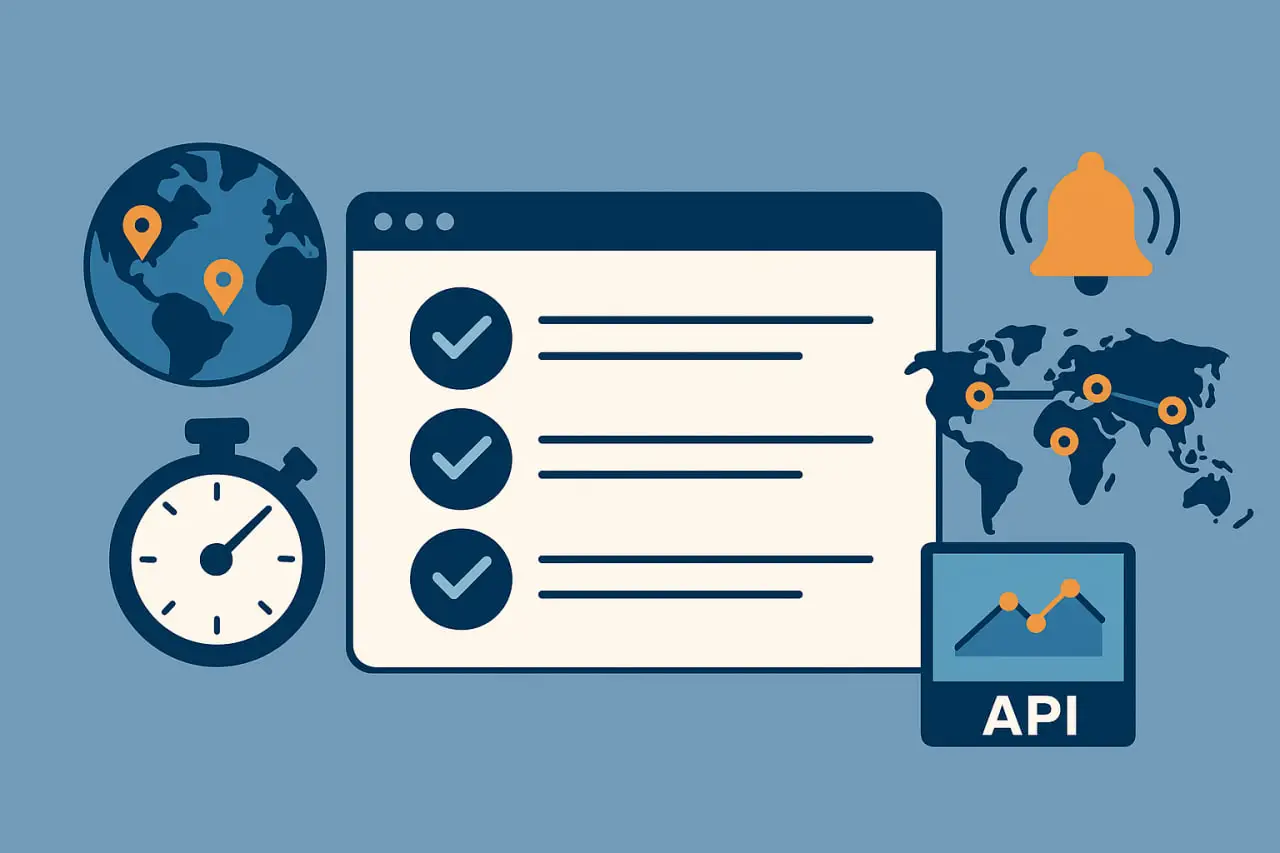 To have a fast and reliable experience digitally you would need to do more than resolving issues. This is why people prefer synthetic monitoring which simulates real user actions with regular intervals. Using this method, businesses can detect performance shortcomings and any technical issues. From testing website load to full flow checkout, everything can be tested before users face any issues.
To have a fast and reliable experience digitally you would need to do more than resolving issues. This is why people prefer synthetic monitoring which simulates real user actions with regular intervals. Using this method, businesses can detect performance shortcomings and any technical issues. From testing website load to full flow checkout, everything can be tested before users face any issues.
How good synthetic monitoring is, depends on the quality of software chosen and strategy used for testing. If you’re unfamiliar with or hearing this term for the first time, you can check out our synthetic monitoring glossary for a quick overview. Now, let’s focus on choosing the right synthetic monitoring software and using best practices for effective results.
Why Synthetic Monitoring Tools Matter
First of all, the digital world is becoming complex, the number of users is growing, and websites now have advanced features. Choosing the right software and best practices means accomplishing your goals easily because these days there is a lot to test, like highly connected APIs and higher customer expectations.
Generic tools and software used to be enough for checking static websites, but hardly any website is static now. Today’s systems need to be checked with real-time testing results of their workflows. Wrong tools cannot see small problems sometimes, which later cost a lot of time, money, and resources to fix.
Our synthetic monitoring solutions offer more than just tracking. Our critical monitoring features include global test coverage, scripting capabilities, response validation, and real-time alerts. Our tools are designed to give you complete control.
Key Synthetic Monitoring Features to Look For
To find a solution that fulfills all our needs, you have to understand your requirements. Then match those with the capabilities of the monitoring software. Now, you will have a tool that fulfills all your needs. All that’s left is creating a strategy that works.
Here are the key features to cross off your checklist when finding the right tool.
- Browser-based testing
- Can accurately test user interactions
- Multi-step scripting to check replication logins, forms, and transactions
- Can check performance from multiple regions
- Custom validation for API responses
- Custom page content
- Has Smart alerts
- Can avoid false positives
Dotcom-Monitor is one of the best synthetic monitoring service providers because we offer all of the above and more.
Start proactive monitoring with confidence
You deserve more than basic uptime checks. Dotcom-Monitor gives you the tools for digital experience.
Implementing Best Synthetic Monitoring Solutions
Choosing the right tool is just the beginning. To get real benefits, you must also be strategic and consistent. But how can you do that? Worry not,ot here are the key practices to follow.
Simulate Complete User Journeys
Uptime does not equal full user experience. Simulating the complete flow of user paths from login to transactions and other ways would uncover any hidden issues or glitches. This method would also catch issues in real time before your users are affected. Simulating complete user journeys is better than traditional monitoring because it misses such hidden issues.
Match Testing Frequency to Service
When it comes to testing, there is no single solution that is suitable for everyone. For critical services, you might need to test them every other minute, but for background services, testing every 15 to 30 minutes is sufficient. Testing with higher frequency helps identify issues quickly, but it can lead to cost and alert fatigue. So, you can find a balance and tune your strategy for the best results without overdoing it.
Monitor from Global Locations
Network latency, routing paths, APIs, and third-party services — all these things can affect performance. This is why monitoring from multiple locations is always the best approach and should not be overlooked.
For example, if your app or website is performing well in North America, the users in Europe might be facing delays. Testing would ensure you are testing from the users’ point of view and not just seeing the backend response.
Define Realistic Thresholds and Alerts
Set your threshold before testing, based on performance history—don’t just put in random limits. Higher response times can be temporary and thus acceptable sometimes, but consistent issues should trigger an alert. Setting up smart alerts is a critical part of synthetic monitoring as it helps teams stay focused without overworking.
Keep Scripts Updated and Readable
With time, your user interfaces will change, API endpoints will change, and many other things will be updated. Testing scripts that worked a few months back will no longer work completely. Take ownership of testing and include validation checks to make sure to keep your scripts updated and accurate.
Monitoring Beyond Your Browser
Synthetic monitoring works best when it is a part of a complete monitoring strategy. Test your website, APIs, backend protocols, and overall load performance. Feeling overwhelmed?
With Dotcom-Monitor’s product suite, you can combine:
- Website monitoring to ensure speed and uptime
- API monitoring to validate service availability and accuracy
- Protocol monitoring to check DNS, SSL, and other service layers
- Load testing to simulate traffic and prepare for real-world stress
When used properly, our synthetic monitoring products can show you where you are lacking. From performance degradation to changes in user experience, you can monitor it all.
Dotcom-Monitor is one of the best synthetic monitoring service providers because we offer all of the above and more.
Detects issues before users do.
Choose a monitoring product with flexibility and trust. Monitor APIs, websites, transactions, and more.
